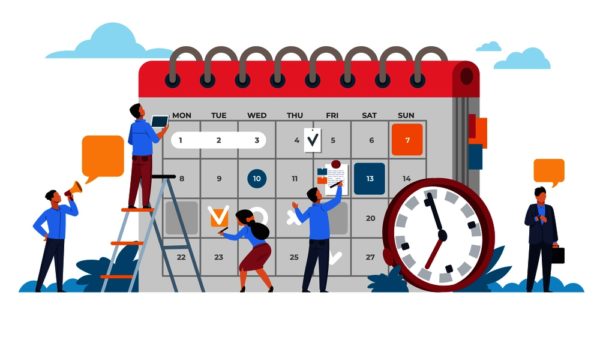Content is the fuel that powers modern marketing. In today’s digital landscape, businesses and individuals alike rely on compelling content to attract, engage, and convert their target audience. But simply creating content isn’t enough. Without a solid strategy, your efforts can feel disjointed and fail to deliver meaningful results. A content marketing strategy is a roadmap that defines your goals, audience, and the types of content you’ll create to achieve your business objectives.
This guide will walk you through the essential steps to build a robust content marketing strategy that drives growth and builds lasting connections.
What Is a Content Marketing Strategy?
At its core, a content marketing strategy is a long-term plan for creating and distributing valuable, relevant, and consistent content to a clearly defined audience. Unlike one-off campaigns, a strategy is proactive and aligns every piece of content with your broader business goals. It answers key questions such as:
- Who are you trying to reach?
- What problems are you solving for them?
- What unique value can you offer?
- How will you measure success?
A well-crafted strategy ensures every blog post, social media update, and email newsletter works together to support your brand’s mission and move your audience through the sales funnel.
Key Steps to Build Your Strategy
Building a successful strategy doesn’t have to be complicated. By following these steps, you can lay a strong foundation for all your future content efforts.
1. Define Your Goals
Before you create anything, you need to know what you’re trying to achieve. Your goals should be S.M.A.R.T. (Specific, Measurable, Achievable, Relevant, Time-bound). Examples of common content marketing goals include:
- Increasing website traffic by 25% in six months.
- Generating 50 new qualified leads per month.
- Improving brand awareness and engagement on social media.
- Establishing your company as a thought leader in your industry.
Setting clear goals will help you focus your efforts and make it easier to measure your return on investment.
2. Understand Your Audience
The most effective content addresses the needs, challenges, and interests of your audience directly. To truly understand them, you should create buyer personas. A persona is a semi-fictional representation of your ideal customer, based on market research and real data.

When developing personas, consider:
- Demographics: Age, location, job title, income, education.
- Psychographics: Hobbies, interests, values, and attitudes.
- Pain Points: What problems do they face that your business can solve?
- Information Sources: Where do they get their information? (e.g., social media, industry blogs, podcasts)
Knowing your audience intimately allows you to create content that resonates deeply and provides genuine value.
3. Conduct a Content Audit
If you already have existing content, a content audit is a crucial step. This process involves reviewing all your current content to identify what’s working, what’s not, and where there are gaps. An audit helps you:
- Identify top-performing content: Find out which posts drive the most traffic and engagement.
- Uncover opportunities: Spot topics you’ve missed or old content that could be updated and repurposed.
- Eliminate underperforming content: Remove or improve content that isn’t serving your goals.
An audit provides a clear picture of your current content landscape, helping you make informed decisions moving forward.
4. Choose Your Content Types and Channels
Based on your goals and audience, you can decide which types of content and distribution channels are right for you. Different formats serve different purposes:
- Blog Posts: These are excellent for SEO, thought leadership, and providing in-depth information.
- Videos: Highly engaging and perfect for product demos, tutorials, and storytelling.
- Case Studies: Powerful for building trust and social proof by showcasing customer success stories.
- E-books & White Papers: Ideal for lead generation and demonstrating expertise on a specific topic.
- Social Media: Great for building community, driving traffic, and sharing quick, “snackable” content.
Don’t feel pressured to use every channel at once. Focus on the ones where your target audience is most active.
5. Plan Your Content Calendar
A content calendar is a schedule that helps you plan, organise, and execute your content strategy. It can be a simple spreadsheet or a sophisticated project management tool. A good calendar includes:
- Content topics and titles.
- Target keywords.
- Publication dates.
- Assigned creators and writers.
- Distribution channels.

A calendar ensures you’re consistently publishing content and allows you to plan around holidays, events, and product launches.
6. Create and Distribute Your Content
This is where you bring your strategy to life. Write, record, and design content that is high-quality and aligns with your brand voice. Remember that distribution is just as important as creation. After you publish a piece of content on your website, promote it across your chosen channels, such as:
- Social media posts.
- Email newsletters.
- Guest posting on other blogs.
- Paid advertising.
7. Measure and Analyse Your Results
Finally, you must track your performance to understand what’s working and what needs to be adjusted. Use tools like Google Analytics, social media insights, and email marketing software to track metrics such as:
- Website traffic and page views.
- Engagement rates (likes, shares, comments).
- Lead conversions.
- SEO keyword rankings.
Analysing these metrics allows you to refine your strategy, double down on what’s successful, and continually improve your content efforts.
Conclusion
A well-defined content marketing strategy is not just a document; it’s the engine that drives your online presence. By defining your goals, understanding your audience, and creating a thoughtful plan, you can create content that not only attracts visitors but also converts them into loyal customers.






No responses yet